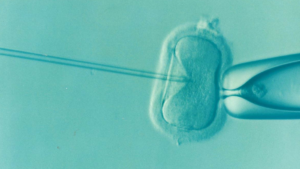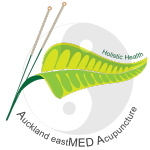Infertility is defined by the failure to achieve a successful pregnancy after 12 months or more of regular unprotected intercourse. This problem is steadily progressing along with change of life style, personal view and potential pollution factors. According to ministry of women’s affair in 2008, around 15 % of couples in New Zealand have difficulty conceiving a child. Based on medical history and physical findings, earlier evaluation and treatment is recommended, especially for women aged over 35 years old. The common assisted reproduction include intra-uterine insemination (IUI), IVF, IVF with intra-cytoplasmic sperm injection (ICSI), the use of donor sperm (donor insemination) or eggs (egg donation).
 As one of the main methods for assisted reproduction, IVF was originally devised for women with tubal damage or dysfunction, or endometriosis, but in combination with ICSI, it also can be used to treat male infertility. It may be used with donated eggs, sperm or embryos as well. In New Zealand, around 5 % of infertility patients have IVF, resulting about 450 IVF babies born every year.
As one of the main methods for assisted reproduction, IVF was originally devised for women with tubal damage or dysfunction, or endometriosis, but in combination with ICSI, it also can be used to treat male infertility. It may be used with donated eggs, sperm or embryos as well. In New Zealand, around 5 % of infertility patients have IVF, resulting about 450 IVF babies born every year.
Although the IVF success rates are substantially better today due to advanced reproductive technology, it is only successful for 47.6% in females under 35 years of age, drops significantly to 20.5% among women aged between 41 and 42 and rarely becomes the case for those older. As IVF could be the last chance for achieving pregnancy with a high cost, with average $10,000 per cycle in New Zealand, many patients tend to suffer stress, anxiety and depression during treatment.
Acupuncture is considered as an assistant method to enhance the success of IVF since Stener-Victorin et al. (1996) published a study demonstrating acupuncture’s positive effects on infertile women with poor uterine artery blood flow. The field of modern acupuncture research in infertility particularly increased with a randomised-controlled-trail study showing positive acupuncture effects on pregnancy rate. Some studies also claim that the pregnancy rate for IVF treatment is significantly increased if conducting acupuncture on the day of embryos transfer (EF). A meta-analysis of over 10 randomized studies also suggested that Acupuncture may be considered as an alternative way to relieve pain during egg collection for those cannot tolerate the side effect of conventional conscious sedation.
According to Traditional Chinese Medicine theory (TCM), there are several theoretical constructs to form the view of body and its dysfunctions. Therefore, treatment is arranged according to TCM pattern diagnosis after analyse signs and symptoms of a disease. Acupuncture is one of the treatment methods that use needles to stimulate energy (qi) flow in the pathway (channel system) within the body. Together with herbs, it can optimize ovary function, increase blood flow to uterus, minimize uterine contract and reduce anxiety and mental stress during IVF procedure.
Generally, treatment is arranged in two stages.
Stage one will provide both treatment from acupuncture and herbs in order to rebalance reproductive system and try for the natural conception. Treatment mainly targets the causes and main issues of infertility such as, irregular menstruation, amenorrhea, PCOS, and endometriosis etc. It can regulate ovary function, increase blood flow to uterus and ovaries, and reduce chromosome abnormality to improve quality of eggs and sperms. It also can balance hormone levels and prepare proper endometrial lining to create a suitable womb environment for the conception. For couple who will undergo IVF in the future, treatment will also optimize their reproductive function and produce the best possible response to IVF drugs to increase success rate. This stage usually lasts 3 to 6 months with treatment 1-3 times per week.
Stage two will provide individualized treatment to physically and mentally support clients undergoing IVF. In this stage, any herb related-treatment needed to be discussed carefully with both clients and their specialists as some may interfere the hormone stimulation. Acupuncture will be the major method and treatment time will be arranged according to the IVF process. Acupuncture can reduce side effects of IVF drug and improve positive response to the stimulation. It keeps the blood flow in the uterus to prepare the lining for the implantation. Treatment can also carry on after ET to early pregnancy stage. It will further support uterus to hold embryos and reduce the risk of miscarriage after implantation. Another major benefit of treatment is to reduce the anxiety, mental stress during this stressful process, especially on the day of ET.
For any inquiry, please contact Auckland eastMED acupuncture.
Reference
Assessment and treatment for people with fertility problems Understanding NICE guidance – information for people with fertility problems, their partners and the public. (2004). London, UK: National Institute for Clinical Excellence.
Huang, D. M., Huang, G. Y., Lu, F. E., Dieterle, S. Neuer, A. & Greb, R. (2011). Review Acupuncture for infertility: Is it an effective therapy? The Chinese Journal of Integrated Tradition and Western Medicine, 17, 386-395.
Huggies. (2011). IVF cost. Retrieved November 13, 2011 from http://www.huggies.co.nz/conception/ivf/cost
Hurtchins, A. I. (2011). The infertility handbook the complete resource for couples longing for a baby. Auckland, New Zealand: Exisle publishing limited. P 170-173.
Ministry of women’s affair. (2008). Quick facts. Retrieved October 11, 2011, from http://www.mwa.govt.nz/women-in-nz/mothers/quick-facts/?search term= quickfacts
Paulus, W. E., Zhang, M., Strehler, E., Seybold, B., & Sterzik, K. (2003). Placebo-controlled trial of acupuncture effects in assisted reproduction therapy. Human Reproduction; 18, xviii18.
Practice Committee of the American Society for Reproductive Medicine. (2008). Definitions of infertility and recurrent pregnancy loss. Fertility and Sterility, 90, S60.
Schnyer, R. N., Birch, S. & MacPherson, H. (2007). Acupuncture practice as the foundation for clinical evaluation. In H. MacPherson (Ed.) Acupuncture research: strategies for establishing an evidence base (pp.153-179). Churchill Livingstone Elsevier.
Society for Reproductive Medicine. (2009). 2009 clinic summary report, retrieved October 20, 2011, from https://www.sartcorsonline.com/rptCSR_ Public MultYearaspx?ClinicPKID=0
Stener-Victorin, E., Waldenstrom, U., Andersson, S., & Wikland, M. (1996). Reduction of blood flow impedance in the uterine arteries of infertile women with electro‑acupuncture. Human Reproduction, 11, 1314‑1317.
Zegers-Hochschild, F., Adamson, G.D., Mouzon, J., Ishihara, O., Mansour, R., Nygren, K., Sullivan, E., Vanderpoel, S., ICMART & WHO. (2009). International Committee for Monitoring Assisted Reproductive Technology (ICMART) and the World Health Organization (WHO) revised glossary of ART terminology. Fertility and Sterility, 92, 1520–1524.
